Speed Up Slow Autocad Drawing

Previously we covered how we can optimize our system to run faster. What we did before can help to improve overall system performance, not unique to AutoCAD.
In this article, we cover specific configuration for AutoCAD. Let's see what we can configure to speed it up.
Minimize startup process
Like what we did when optimizing our system, we can optimize AutoCAD not to load what we don't need. There are several processes that you can disable.
Disable splash screen
When you start AutoCAD, it will load splash screen like below.
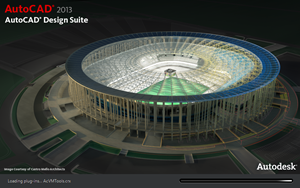
Disabling the splash screen is believed can reduce loading time. It may not gives significant effects on new computers, but it helps on a slow computer. At least it will not load the image and consume memory for that process.
To disable splash screen, right click the AutoCAD shortcut on your desktop. Click properties on contextual menu.
Add /nologo switch on target field to disable it. Now when you double click the shortcut, AutoCAD will not show the splash screen when loading.
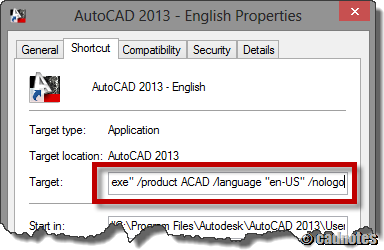
There are much more you can do with startup switch. If you are interested, you can see more about AutoCAD startup switches here.
Disable creating new file on startup
When you start AutoCAD, it will create a new file using the default template. The thing is we don't always want to create a new file when we open AutoCAD. Many times we want to continue working with the previous drawing. So the opened drawing is usually useless.
Another reason why it would be useless is when you have many templates for your drawings. When you create new drawings, you probably want to use another template.
You can change this behavior by changing STARTUP system variable to 1. Instead of creating a new file, it will let you choose to create a new file or open existing files.
For AutoCAD 2012 or later, you can change it to 2 as well. It will load AutoCAD without opening any file or any dialog boxes.
Disable InfoCenter
InfoCenter or Communication Center provides information related to your products. It has several tools, like AutoCAD Exchange, Stay Connected, and Autodesk 360 sign in.
There are reported problems that say it prevents AutoCAD from starting. After AutoCAD starts, it will run a background process as WSCommCntr4.exe. It takes your computer resources without you noticing it.
You can disable InfoCenter by changing a registry value or install this free program from ManuSoft here.
Below is my AutoCAD title bar looks like after disabling InfoCenter. As you can see, no more sign in and AutoCAD Exchange icon there.
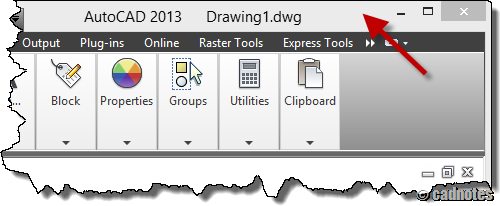
For AutoCAD 2013, you MUST sign out from Autodesk 360 before disabling InfoCenter. If you disable it while you're still signed in, AutoCAD will not be able to run. It will give fatal error message.
If your AutoCAD can't run after disabling InfoCenter, enable it again. Your AutoCAD should be able to run normally again.
Be careful when working with registry!
See how you can disable Info Center here.
Drafting Settings
There are many new drafting settings have been added. There are useful for sure. However, they consume many resources. Let's see what you can turn off to get better performance.
Dynamic Input
Dynamic Input is always accused of degrading graphic performance. Many veterans don't like to use it. Try to turn it off.
Quick Properties
Quick Properties is a small properties palette that will appear when you select an object. I like it. But again, if you use a slow computer it can be annoying.
Selection Cycling
Selection Cycling is a small window that will appear when you select overlapping objects. Any dialog box or tool tips popping up will consume resources. Try to turn it off and use manual selection cycling instead. You can manually cycle between object by pressing SHIFT + SPACE.
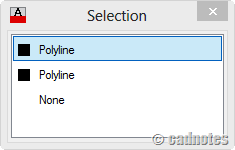
Live/Quick Preview
The live preview also consumes resources. There are several live previews you can see when editing objects in AutoCAD.
Hatch
Hatch Quick Preview is very heavy. I've seen some old computers can take few minutes before they can use hatch command. Literally. You can disable this feature by changing HPQUICKPREVIEW to off.
Selection Preview
Selection Preview is quite fancy in recent versions. It shows transparent color when you use window selection, and highlight faces in 3D. The transparent display can degrade computer performance, especially graphical performance.
To disable it, open AutoCAD options. In selection TAB, Preview category click visual effect settings. Disable selection effects here.
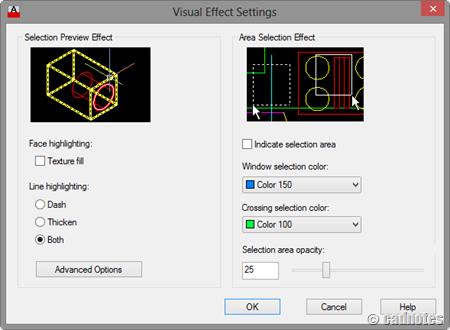
In AutoCAD 2013, one more thing that you can turn off: property preview. It's below visual effects settings button.
If you often to override object properties, you might want to turn it off.
Command Line
You can undock AutoCAD 2013 command line and make it just one line. It will show three command history and can be transparent.
Again, transparency is not good. You will get better performance if you just dock command line.
Purge
Now the drawing file itself. AutoCAD keeps many objects and style definition. If you don't use them, you can remove them from drawings using PURGE command. You can manually select the object then click Purge button. You can also choose to purge all automatically.
Another purge option that many people are not aware off is PURGE REGAPPS. Regapps can make your drawing five times larger than it should be. You can purge regapps by typing –PURGE (notice the – in front of PURGE command) then ENTER. Choose Regapps. You can find detailed information about Regapps on Without a Net here.
By purging unnecessary objects, it will make your drawing file smaller. And it can affect performance significantly.
Script to configure AutoCAD System Variables Automatically
You can change multiple system variables at once by running our script. Download this zip file: fasteracad.zip. There are two files inside the zip file: fastacad.scr and restoreacad.scr. Run the fastacad.scr to turn off all system variables that slow AutoCAD down. And run restoreacad.scr to restore the system variables that fastacad.scr changed.
To run a script command: type SCRIPT then enter. Navigate to the script file then run the script.
What else?
Of course, if you have a powerful machine, you can just turn everything on. But if you can't purchase a new machine yet for whatever reason, try to optimize your system. Anything looks fancy, live, automatic and transparent usually consume a lot of resources. Keep an eye on those things.
Unless you really need it, you may want to try turning off feature that you don't use. Now, what else do you think we should turn off to gain performance?
What did you turn off, and what did you decide to turn on? Will you share it here?
Source: https://www.cad-notes.com/speed-up-autocad-configuration/
0 Response to "Speed Up Slow Autocad Drawing"
Post a Comment